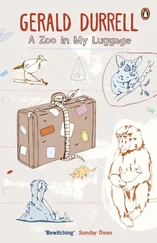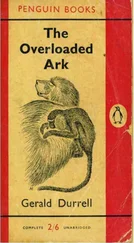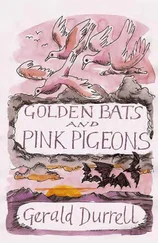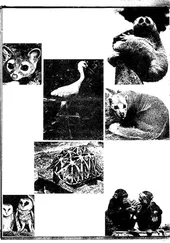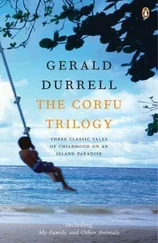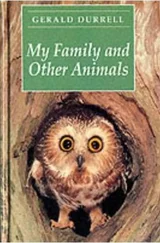Gerald Durrell - The Bafut Beagles
Здесь есть возможность читать онлайн «Gerald Durrell - The Bafut Beagles» весь текст электронной книги совершенно бесплатно (целиком полную версию без сокращений). В некоторых случаях можно слушать аудио, скачать через торрент в формате fb2 и присутствует краткое содержание. Жанр: Современная проза, на английском языке. Описание произведения, (предисловие) а так же отзывы посетителей доступны на портале библиотеки ЛибКат.
- Название:The Bafut Beagles
- Автор:
- Жанр:
- Год:неизвестен
- ISBN:нет данных
- Рейтинг книги:5 / 5. Голосов: 1
-
Избранное:Добавить в избранное
- Отзывы:
-
Ваша оценка:
- 100
- 1
- 2
- 3
- 4
- 5
The Bafut Beagles: краткое содержание, описание и аннотация
Предлагаем к чтению аннотацию, описание, краткое содержание или предисловие (зависит от того, что написал сам автор книги «The Bafut Beagles»). Если вы не нашли необходимую информацию о книге — напишите в комментариях, мы постараемся отыскать её.
The Bafut Beagles — читать онлайн бесплатно полную книгу (весь текст) целиком
Ниже представлен текст книги, разбитый по страницам. Система сохранения места последней прочитанной страницы, позволяет с удобством читать онлайн бесплатно книгу «The Bafut Beagles», без необходимости каждый раз заново искать на чём Вы остановились. Поставьте закладку, и сможете в любой момент перейти на страницу, на которой закончили чтение.
Интервал:
Закладка:
On the floor, among the completely untouched food and drink, lay a dead Idiurus. The others clung to the top of the cage like a flock of bats and twittered suspiciously at me. I retrieved the dead specimen and carried it over to the table, where I subjected it to a careful dissection. The stomach, to my complete surprise, was crammed with the partially digested red husk of the palm-nut. This was the very last thing I expected to find, for the palm-nut is, in the Cameroons at any rate, a cultivated product, and does not grow wild in the forest. If the rest of the colony had been eating palm-nuts on the night before they were captured by us, it meant that they must have travelled some four miles to the nearest native farm, and then come down to within a few feet of the ground to feed. This was all very puzzling, but at any rate it gave me something to work on, so the next night the Idiurus cage was festooned like a Christmas tree with bunches of red palm-nuts, in addition to the other foods. We put the food in at dusk, and for the next three hours Smith and I carried on long conversations that had nothing to do with Idiurus, and with an effort we pretended not to hear the squeaks and rustlings that came from their cage. After we had eaten, however, the strain became too great, and we crept up to the cage and gently lifted a corner of the sacking.
The entire colony of Idiurus was down on the floor of the cage, and all of them were busily engaged in eating palm-nuts. They squatted on their haunches and held the nuts in their minute pink forepaws like squirrels, turning the nuts quickly as their teeth shredded off the scarlet rind. They stopped eating as we lifted the sacking and peered at us; one or two of the more timid ones dropped their nuts and fled to the top of the cage, but the majority decided that we were harmless and continued to eat. We lowered the sacking into place and executed a war dance round the marquee, uttering loud cries to indicate our pleasure, cries that awoke the monkeys and set them chattering a protest and brought the staff tumbling out of the kitchen to see what was the matter. When they heard the good news that the new beef was chopping at last, they grinned and cracked their knuckles with pleasure, for they took our work very much to heart. All day gloom had pervaded the camp because the new beef would not chop, but now everything was all right, so the staff returned to the kitchen, chattering and laughing.
But our joy was short-lived, for on going to the cage next morning we found two Idturus dead. From then on our little colony diminished steadily, week by week. They would eat only palm-nuts, and, apparently, this was not enough for them. It was quite astonishing the variety of food we put in the cage, and which they refused – astonishing because even with the most finicky animal you will generally strike something it likes, if you offer it a wide enough choice of food. It appeared that the Murta were not going to be easy to get back to England.
CHAPTER TWELVE
A Wilderness of Monkeys
Perhaps the most noisy, the most irritating, and the most lovable creatures that shared our marquee were the monkeys. There were forty of them altogether, and life under the same roof with forty monkeys is anything but quiet. The adult animals were not so bad; it was the baby monkeys that caused so much trouble and extra work for us; they would scream loudly if left alone, demand bottles full of warm milk at the most ungodly hours of night and morning; they would get Stricken with all sorts of baby complaints and frighten us to death; they would escape from the nursery and get near the Golden Cat's cage, or fall into kerosene tins full of water, and generally drive us to the edge of a nervous breakdown. We were forced to think up the most Machiavellian schemes for dealing with these babies, and some of them were quite extraordinary. Take the case of the baby Drills; these baboons are extremely common in the forests of the Cameroons, and we were always being brought babies of all ages. The Drill is that rather ugly-looking creature you can see in most zoos, who has a bright pink behind and does not hesitate to share its glory with you. Very young Drills are among the most pathetic and ridiculous-looking creatures in the world: they are covered with a very fine silvery grey fur, and their heads, hands, and feet look at least three times too big for their bodies. The hands, feet and face are a shade that we used to describe as boiled baby pink, and their minute bottoms were the same colour. The skin on their bodies was white, spotted in places with large areas, exactly like big birth-marks, of bright china blue. Like all baby monkeys, they have staring eyes, and their arms and legs are long and attenuated and tremble like the limbs of a very old person. This should give you some idea of a baby Drill.
The early days of a Drill's life are spent clinging with its muscular hands and feet to the thick fur of its mother. So our baby Drills, when they had transferred their affections to us and decided that we were their parents, demanded loudly and vociferously that they should be allowed to cling to us. Next to vast quantities of food, the most important thing in a young Drill's life is to feel that it has a good grip on the provider of the food. As it is almost impossible to work when you have four or five baby Drills clinging to you like miniature, cackling Old Men of the Sea, we had to devise some plan to keep them happy. We found two old coats and slung these over the backs of chairs in the centre of the marquee; then we introduced the babies to them. They were used to seeing us in these coats, and I expect the garments retained a certain characteristic odour, so they apparently decided that the coats were a sort of skin that we had discarded. They clung to the empty sleeves, the lapels, and the tails of these two coats as though they had been glued on, and while we went on with our work around the camp they would hang there, half asleep, occasionally waking up to carry on a cackling conversation with us.
The great numbers of people who used to visit our campsite and look round the collection always seemed most affected by our group of baby monkeys. A baby monkey, in all its ways, is very like a human baby, only infinitely more pathetic.
The women in these parties would gaze at our young monkeys with melting eyes, making inarticulate crooning noises and generally brimming over with mother love. There was one young lady who visited us several times and was so affected by the pathetic expressions of the young monkeys that she unwisely took it upon herself to deliver a lecture to me about the extreme cruelty of taking these poor little creatures from their mothers and incarcerating them in cages. She waxed quite poetical on the joys of freedom, and contrasted the carefree, happy existence these babies would have in the tree-tops with the ghastly imprisonment for which I was responsible. That morning a baby monkey had been brought in by a native hunter, and since the young lady seemed to be such an expert on monkey life in the tree-tops, I suggested that she might like to help me perform a little task that had to be gone through with each new monkey that arrived. She agreed eagerly, seeing herself in the role of a sort of simian Florence Nightingale.
The little task consisted, quite simply, in searching the new baby for internal and external parasites. I explained this, and the young lady looked surprised: she said that she did not know that monkeys had parasites – beyond fleas, of course. I produced the little basket that the monkey was brought in, and removing some of its excreta I spread it out on a clean piece of paper and showed her the numbers of threadlike worms it contained. My helper remained strangely silent. Then I brought out the baby: he was a Putty-nose Guenon, an adorable little fellow clad in black fur, with a white shirt-front and a gleaming, heart-shaped patch of white fur on his nose. I examined his tiny hands and feet and his long slender fingers and toes and found no fewer than six jiggers comfortably ensconced. These minute creatures burrow their way into the skin of the feet and hands, particularly under the nails, where the skin is soft, and there they eat and swell and grow, until they reach the size of a match-head. Then they lay their eggs and die; in due course the eggs hatch and the baby jiggers continue the good work that their parent had begun. If a jigger infection is not dealt with in the early stages it can lead to the loss of the joint of a toe or finger, and in extreme cases it can destroy all the toes or fingers, for the jiggers go on burrowing and breeding until they have hollowed the part out to a bag of skin rilled with pus. I have had jiggers in my foot on several occasions, and can vouch for the fact that they can be extremely painful. All this I explained to my helper in graphic detail. Then I got the tube of local anaesthetic, froze the fingers and toes of the little Guenon, and with a sterilized needle proceeded to remove the jiggers and disinfect the wounds they left. I found this local anaesthetic a boon, for the operation is painful and the baby monkeys would not sit still otherwise. When this was over I ran my fingers down the monkey's tail and felt two sausage-shaped swellings, each as long as the first joint of my little finger and about the same circumference. I showed these to my companion, and then parted the hak so that she could see the circular, porthole-like opening at the end of each swelling. Looking through this porthole into the interior of the swelling, you could see something white and loathsome moving. I explained, with my best Harley Street air, that a certain forest fly lays its eggs on the fur of various animals, and when the maggot hatches it burrows down into the flesh of its host and lives there, fattening like a pig in a sty, getting air through the porthole, and, when it finally leaves to turn into a fly, the host has a hole the circumference of a cigarette in its flesh, which generally becomes a suppurating sore. I showed my helper, who was by now quite pale, that it was impossible to hook these maggots out. I got the needle and, parting the hair, showed her the creature lying in its burrow like a miniature barrage balloon; as soon as the tip of the needle touched it, however, it just compressed itself into a wrinkled blob, folding up like a concertina, and slid back into the depths of the monkey's tail. Then I showed her how to get them out – a method I had invented: pushing the nozzle of the anaesthetic tube into the porthole, I squirted the liquid inside until I had frozen the maggot into immobility; then, with a scalpel, I enlarged the porthole slightly, stabbed the maggot with the end of the needle and withdrew it from its lair. As I pulled the wrinkled white horror out of the bloodstained hole, my helper left me suddenly and precipitately.
Читать дальшеИнтервал:
Закладка:
Похожие книги на «The Bafut Beagles»
Представляем Вашему вниманию похожие книги на «The Bafut Beagles» списком для выбора. Мы отобрали схожую по названию и смыслу литературу в надежде предоставить читателям больше вариантов отыскать новые, интересные, ещё непрочитанные произведения.
Обсуждение, отзывы о книге «The Bafut Beagles» и просто собственные мнения читателей. Оставьте ваши комментарии, напишите, что Вы думаете о произведении, его смысле или главных героях. Укажите что конкретно понравилось, а что нет, и почему Вы так считаете.


